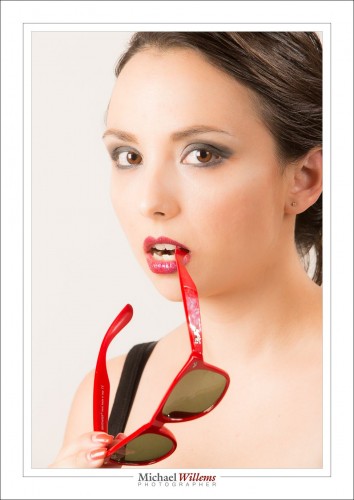How much “editing” do we do as photographers? I don’t mean just editing some supermodel’s images, but I mean real people.
I do not call it “editing”. I call it “finishing”. Because I am on the side of “not much”: I hate making someone into something they are not. At the same time, however:
- Temporary blemishes can be fixed, as far as I am concerned. They will not be there tomorrow anyway.
- Anything I can do with light, I can do with Lightroom, I feel.
- Anything a make-up artist can do with make-up, I can do with Lightroom, I feel.
In the following portrait of the other night, of the lovely Liz Medori, I did little except:
- Adjust exposure – because my light meter and camera disagree with Lightroom.
- Adjust white balance.
- Crop.
- Remove stray hairs.
- Fix temporary blemishes.
- I also adjusted Lightroom’s “clarity” a little, however. This is akin to choosing a different, less contrasty film.
That led to this:
What I will not willingly do is change shapes (remove fat), move things (like noses) and change sizes of things (like noses and breasts). I think people look just fine the way they are, and I feel uncomfortable contributing to the fiction that the world’s actresses and models are perfect, while you and I and all other real people are not.
What do you think? When so much of the market demands changes, should we make them?


The lines between photography, illustration, graphic design and videography have become rather blurred lately.
I would say that, within what I’d call photography, I’m generally OK with global adjustments (any mathematical operation that applies to the entire image). That’s just modifications to the image conversion process, which have always been part of this art in some form or another. And I’m OK with reasonable touch-ups to correct mistakes or temporary flaws (zits, dust spots, burning in a bit or slapping on a grad filter in post).
I agree with you, though, that we shouldn’t be editing how people look and calling that “photography”. And we certainly shouldn’t be compositing stuff that wasn’t really there and claiming it was. The faithful reproduction of reality is at the heart of this field, and if we stray too far from that, we end up with situations like that little scandal where H&M decided that no real girl was pretty enough for their $20 dresses and so had one computer-rendered from a CAD model to their exacting standards. And tried to pass “her” off as real.